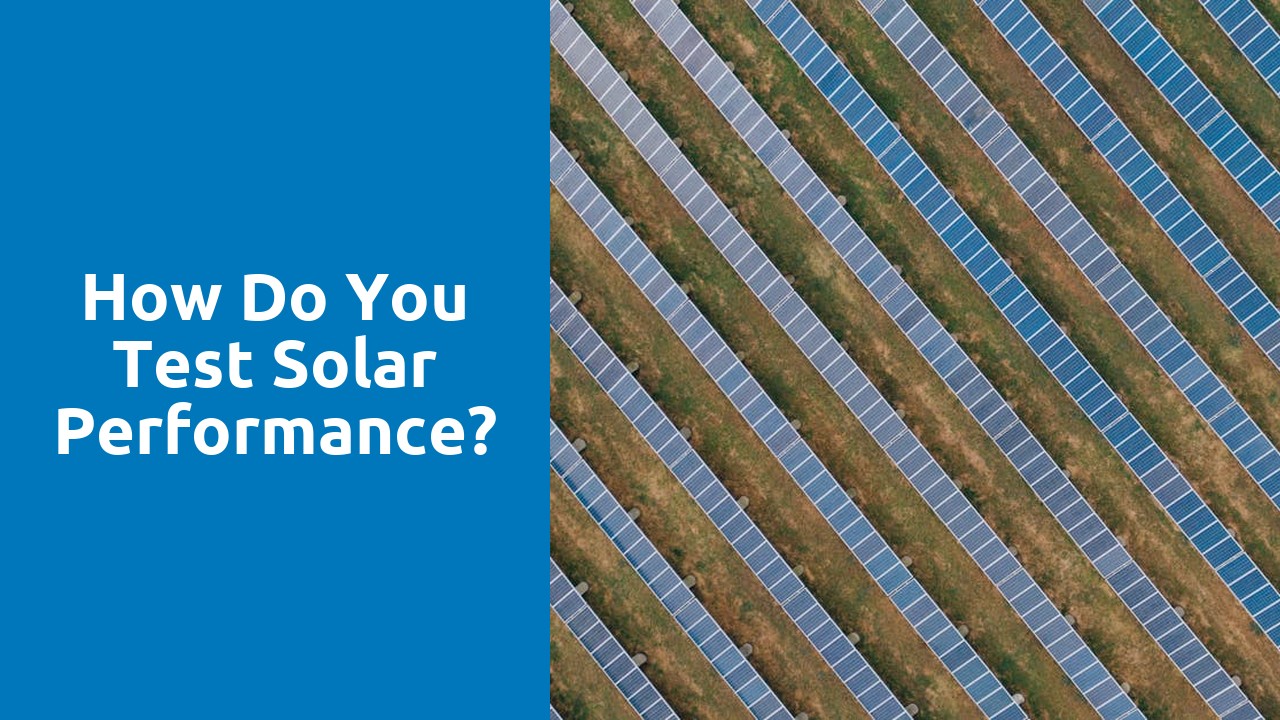
Verifying System Wiring
When verifying system wiring in a solar panel system, it is crucial to ensure that all connections are secure and free from any signs of damage or wear. By meticulously inspecting the wiring for any loose connections or exposed wires, you can promote the efficient and safe operation of the system. Faulty wiring can not only compromise the performance of the solar panels but also pose a significant safety risk. Hence, a thorough review of the system's wiring is an essential aspect of Solar Panel System Performance Testing.
Additionally, using a multimeter to measure the voltage and current at various points along the wiring can help detect any irregularities that may impede the system's functionality. By systematically testing the wiring connections and recording the measurements accurately, you can identify any areas that require maintenance or replacement. Verifying system wiring is a fundamental step in ensuring that the solar panel system operates optimally and delivers the expected performance in harnessing solar energy.
Conducting Electrical Continuity Checks
When assessing the electrical continuity in a solar panel system as part of Solar Panel System Performance Testing, it is essential to confirm that all electrical connections are secure and have low resistance. This process involves using a multimeter to measure the resistance across various components such as cables, fuses, and connectors. By ensuring there are no loose connections or damaged components, the system's overall performance and efficiency can be maintained at optimal levels.
Furthermore, conducting electrical continuity checks allows testers to detect any potential issues that could lead to system malfunctions or safety hazards. Identifying and rectifying any irregularities in the electrical connections not only safeguards the system performance but also guarantees the safety of the installation. A thorough and systematic approach to checking electrical continuity is crucial in ensuring that the solar panel system functions reliably and efficiently over its operational lifespan.
Assessing Solar Panel Tilt and Orientation
Assessing Solar Panel Tilt and Orientation is a crucial aspect of Solar Panel System Performance Testing. Ensuring that solar panels are correctly positioned to receive the maximum amount of sunlight is key to optimizing energy generation. The angle at which solar panels are tilted and their orientation towards the sun directly impact their efficiency in converting sunlight into electricity. Installers must carefully consider factors such as the geographical location, time of year, and shade patterns to determine the most optimal tilt angle for each solar panel.
Moreover, regularly assessing the tilt and orientation of solar panels is essential for maintaining optimal energy output over time. As the position of the sun changes throughout the day and from season to season, adjustments may be needed to ensure that the panels are capturing sunlight at the most favourable angles. By proactively monitoring and adjusting the tilt and orientation of solar panels, system owners can maximise their energy production and ultimately improve the overall performance and efficiency of their solar panel system.
Calculating Optimal Tilt Angle for Maximum Sunlight Exposure
To ensure that a solar panel system is performing optimally and receiving maximum sunlight exposure, it is crucial to calculate the optimal tilt angle. The tilt angle of solar panels plays a significant role in determining the efficiency of energy generation. By adjusting the tilt angle to align the panels perpendicular to the sun's rays, you can enhance the system's performance and efficiency significantly. Calculating the optimal tilt angle involves considering various factors such as the system's geographic location, the time of year, and the specific angle that allows for the highest sunlight reception.
Solar panel system performance testing includes assessing the ideal tilt angle to achieve maximum sunlight exposure and energy production. By determining the optimal tilt angle, you can ensure that your system operates at its peak efficiency levels throughout the year. This calculation is essential for maximising the return on investment of a solar panel system and achieving the highest possible energy yield. To calculate the optimal tilt angle accurately, it is essential to use reliable tools and consider the unique environmental conditions of the installation site.
Testing System Safety Features
Solar Panel System Performance Testing is an essential step to ensure the safe and efficient operation of a solar energy system. Testing the system safety features involves verifying that all components are functioning correctly and that the system is up to industry standards. This process includes checking for proper grounding, ensuring the correct installation of ground fault detectors, and testing the functionality of other safety mechanisms to prevent potential hazards.
Regular maintenance and testing of system safety features are crucial to identifying any issues or faults that could compromise the performance and safety of the solar energy system. By conducting routine checks and tests, such as ensuring proper functioning of ground fault detectors and verifying system grounding, solar system owners can rest assured that their system is operating at optimal levels and is safe for use. Integrated safety features are designed to protect the system from electrical faults or failures, and it is imperative to regularly test these features to maintain the longevity and efficiency of the solar energy system.
Ensuring Proper Functioning of Ground Fault Detectors
When it comes to ensuring proper functioning of ground fault detectors during solar panel system performance testing, meticulous attention to detail is paramount. Ground fault detectors play a crucial role in safeguarding the system from potentially hazardous electrical faults that could compromise both safety and efficiency. Therefore, it is imperative to conduct thorough checks to validate that these detectors are operating as intended.
Technicians should methodically inspect the ground fault detectors to verify that they are accurately detecting any deviations from the expected electrical currents in the system. This involves simulating fault conditions to confirm that the detectors promptly identify abnormal currents and trigger the necessary safety mechanisms. By rigorously testing the ground fault detectors, technicians can guarantee that the Solar Panel System Performance Testing is comprehensive and reliable, thereby contributing to the overall efficacy and longevity of the solar panel system.
FAQS
What is the importance of testing solar performance?
Testing solar performance ensures that the system is functioning optimally and efficiently, maximizing energy output and savings.
How do you verify system wiring in a solar performance test?
Verifying system wiring involves checking for any loose connections, damaged wires, or faulty components to ensure proper functioning of the solar system.
What is the purpose of conducting electrical continuity checks in a solar performance test?
Conducting electrical continuity checks helps in identifying any breaks or interruptions in the circuit, ensuring that electricity flows smoothly through the solar system.
How do you assess solar panel tilt and orientation during a solar performance test?
Assessing solar panel tilt and orientation involves evaluating the angle at which the panels are installed to maximize sunlight exposure and energy generation.
How is the optimal tilt angle for maximum sunlight exposure calculated in a solar performance test?
The optimal tilt angle for maximum sunlight exposure is calculated based on the geographical location of the solar system to ensure that the panels receive the most sunlight throughout the day.
What safety features are tested in a solar performance test?
Safety features such as ground fault detectors are tested to ensure that the solar system is equipped to handle electrical faults and protect users from any potential hazards.
